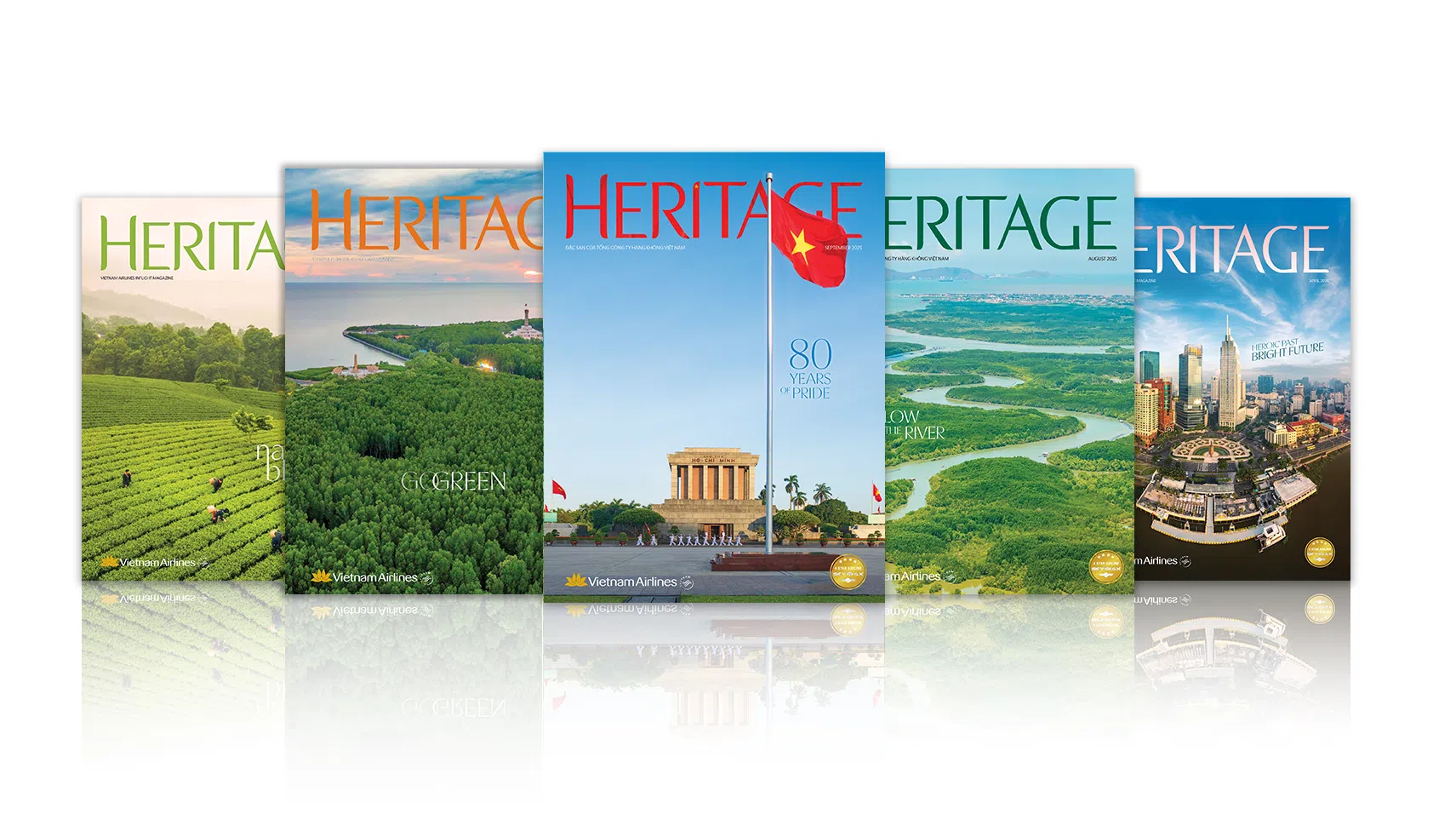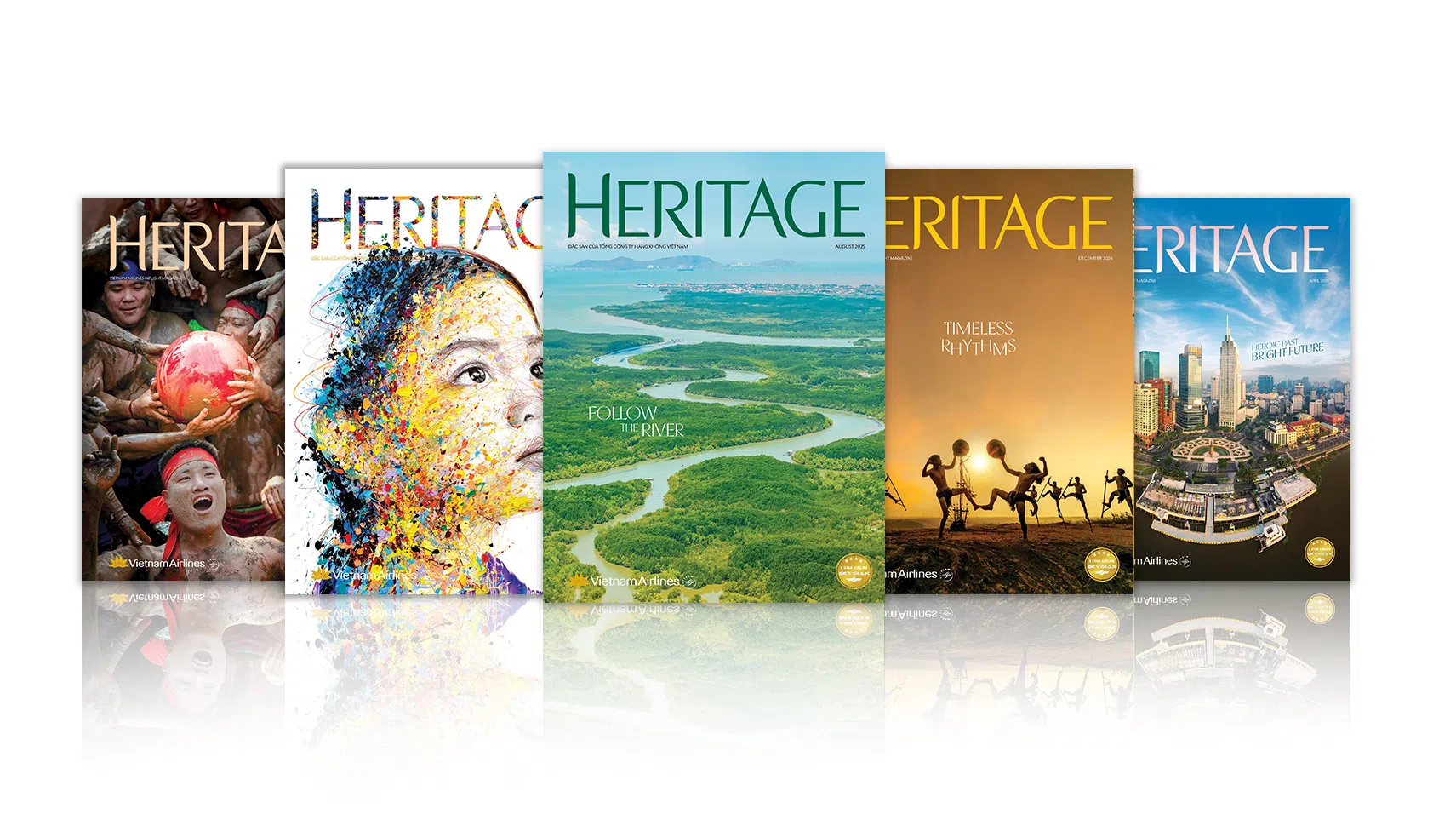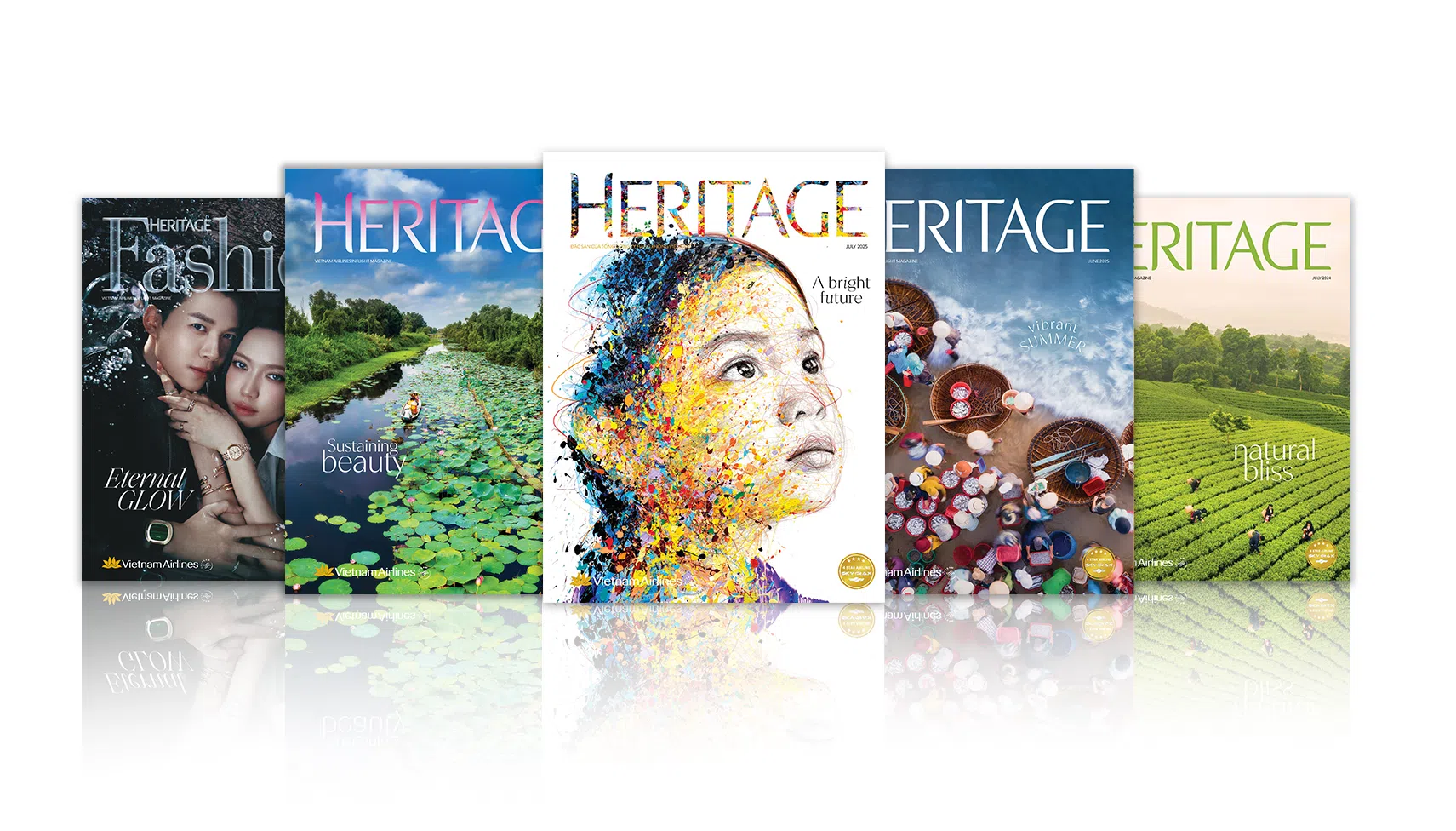Story: Pham Minh Quan
Photos: Nguyen Trong Cung
When the harvest season comes, the land glows gold, laughter drifts through the fields, and the air is rich with the scent of freshly cut straw and new rice. This is the call of the rice homeland – once old Thai Binh, now Hung Yen – beckoning those who seek the soul of Vietnam’s wet-rice civilization.
As autumn’s gentle sun spills across the fields, the Red River Delta comes alive with the vibrant rhythms of the harvest. Here, rice is more than a crop that has sustained countless generations – it is the very soul of this fertile land. The ripe fields don a shimmering golden robe, swaying in the breeze as if to welcome those coming home.
Since their ancestors first settled the land, Thai Binh has been a meeting point of diverse communities, blending cultural traits from across the country into a unique local identity. With a proud tradition of learning and a vibrant literary heritage, the region has excelled in intensive rice cultivation and mastered intricate handicrafts. As a gateway to Vietnam’s East Sea, it has long been celebrated in historical records as the “land of rice and craft” and a “storehouse of people and resources,” contributing talent and strength to the nation’s defense and prosperity through every era.
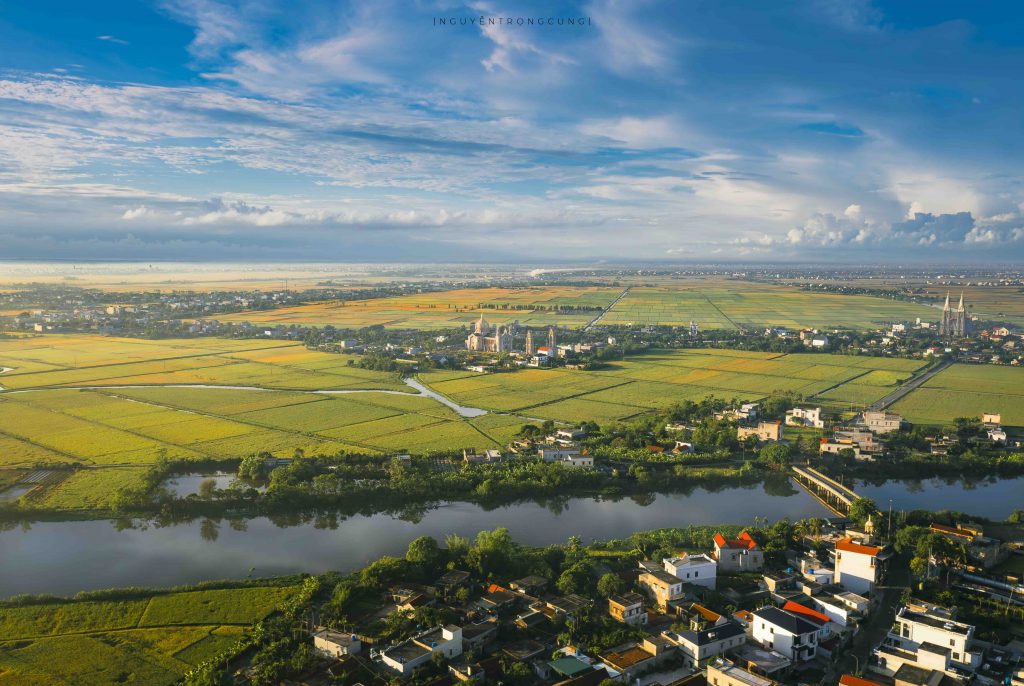
The region’s farmers cultivate two main crops each year: the spring and autumn harvests. Water from the “mother rivers” – the Red, the Luoc, the Tra Ly, and the Hoa – flows in, bringing fertile alluvium to nourish the fields. In June and October, the golden seasons return. From the crest of a dyke, the fields stretch out like shimmering carpets, curving around irrigation channels and village lanes. In Dong Chau, the paddies form neat squares like a chessboard; in Dong Hung, green waves of rice ripple along the Tien Hung River. Further afield, by the Lan River, stands the solemn Bac Trach Church (also known as the Shrine of the Divine Mercy Bac Trach). Here, chiming church bells mingle with the wind rustling through the rice stalks.
The harvest season bustles like a village festival. The hum of harvesters blends with cheerful chatter, while sun-bronzed farmers in brown tunics deftly gather the rice. Bicycles and carts carry the golden bounty to drying yards, where the fragrance of new rice fuses with the scents of straw and earth. The first meal of the season, a bowl of fluffy white rice, vegetable soup, and braised fish, lives in the memory of generations, embodying a rustic essence not found in any city.
The wet-rice civilization is reflected not only in the fields but also in the region’s vibrant culture and beliefs. Each village has a communal house where, for centuries, locals have hosted festivals to honor tutelary gods and national heroes, or to pray for good harvests and host traditional folk performances. Many distinctive celebrations still endure: the Keo Pagoda Festival, held twice a year with its riverine spirit; Quang Lang Village Festival, featuring the dance of a giant couple “Ong Dung – Ba Da”; the Het Temple Festival, with its ball-wrestling games; and the Sao Den Festival, preserving the age-old tradition of kite flying. These events recreate the life of an agricultural community while showcasing rural artistry through cooking contests, cake-making, games involving mud, and wrestling matches.
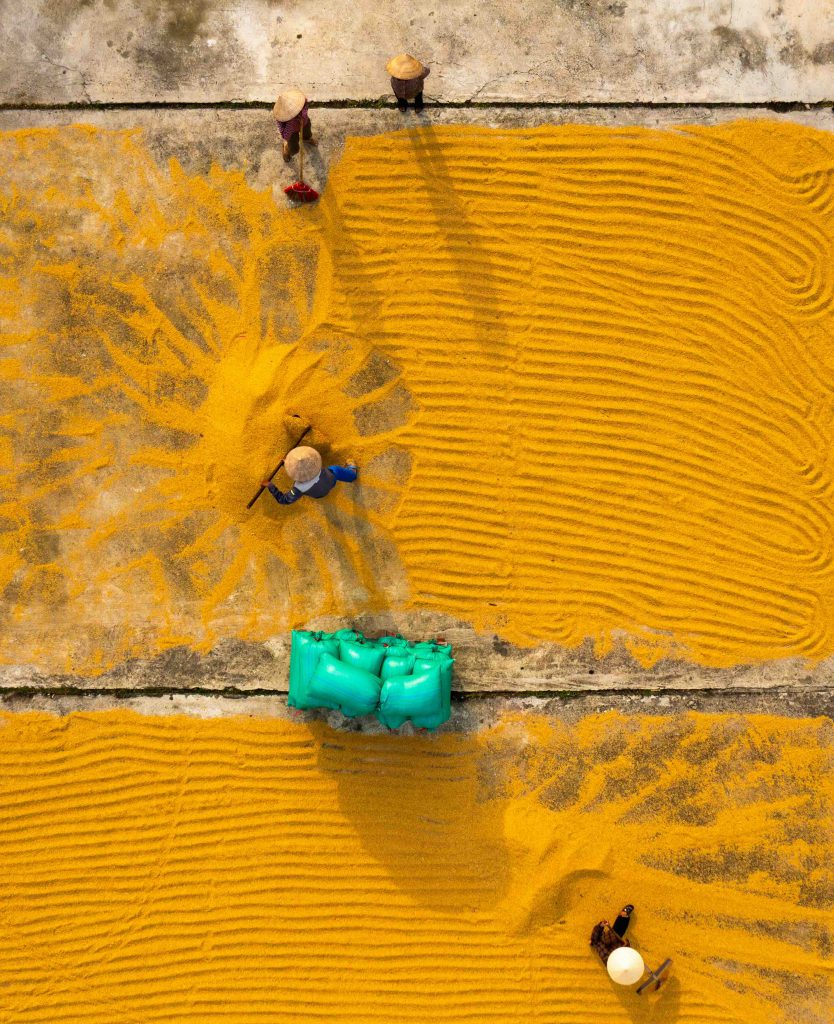
Amid the sound of celebratory drumbeats, traditional dances – ranging from flag and fan dances to the stately Bat Dat, boat, and dragon dances – are carefully preserved. These performances embody the living memory of the community and stand as a source of pride for a land as open-hearted and generous as it is steadfast, where people have not only defended their homeland and tended the fields but also created art.
Today, the paddies have changed. Machines ease the workload, and new rice varieties yield more grain. Yet farmers still follow the rhythms of the land and sky, preserving the soul of each season. For travelers, the rice homeland offers rare moments of serenity: waking to the call of roosters, breathing in the scent of ripening grain, and standing on a dyke to watch the red sun sink behind bamboo groves as harvest silhouettes stretch across golden fields.
The song of the golden harvest still echoes, linking past and present. Each grain carries the resilience, love for the land, and enduring spirit of the delta’s people. Though modern life moves at a faster pace, in Hung Yen, the harvest season remains a heartfelt invitation for all who pass through to experience the essence of Vietnam’s wet-rice civilization.







